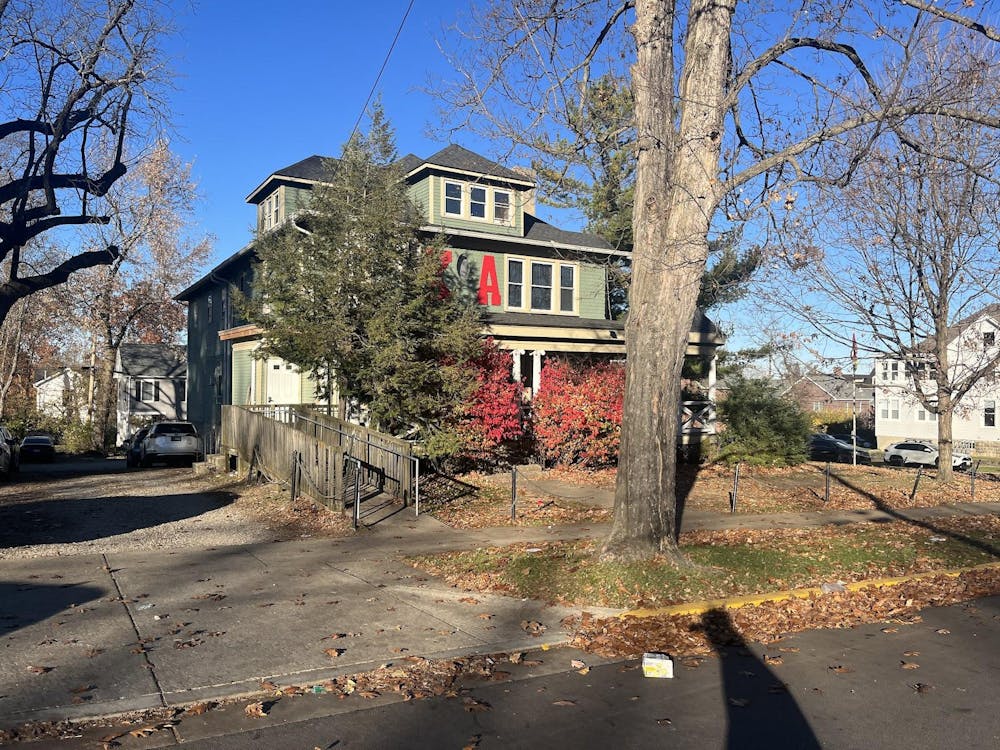More than 17% of Miami’s undergraduate population is identified as disabled by the Miller Center for Student Disability Services – that’s nearly 3,000 people. Most able-bodied people focus on the visible aspects in academic buildings; accommodations like ramps, elevators and braille signs. But there’s one question very few people tend to ask: Where do they live in Oxford?
Living on campus is central to the college experience, and the Miller Center is charged with upholding this commitment to students with disabilities.
“Our role is facilitating equal access to the university experience for students with documented disabilities,” said Dan Darkow, director of the Miller Center. “That is, of course, the academic realm, but also includes housing, dining and all the programs and services Miami has to offer.
Students who are seeking housing accommodations begin by contacting the center and submitting proof of their disability. Afterwards, they’ll meet with one of the Miller Center’s five access coordinators, who will then decide if accommodations are necessary. From there, the application is reviewed by the Housing Accommodation Committee, an organization working with a wide range of universities to ensure students get the care they need. Of the students affiliated with the Miller Center, roughly 13-15% receive housing accommodations.
Housing accommodations vary greatly depending on individual needs.
“Whenever we are presented with a concern for an individual student, we work collaboratively to identify the best solution forward that will benefit them and future students,” Darkow said.
Accommodations look different for everybody, but some of the most common are single rooms, private bathrooms, gender‑neutral restrooms or first-floor placement. For students with sensory issues – like hearing or vision loss – accommodations might look like visual fire alarms or bed-shaking devices to alert residents to an emergency.
Enjoy what you're reading?
Signup for our newsletter
Darkow said Miami prides itself on the fact that all renovated buildings are up to federal accessibility standards and include things like power-operated doors and grab bars in showers. This does not mean that unrenovated dorms are inaccessible; it just means that they are not accessible for every disability.
“Just because a building is accessible to one person doesn't mean it's accessible to somebody else,” Darkow said. “Those experiences can significantly vary depending on the impact of someone's disability.”
Darkow also said housing accommodations are applied to students with psychological or mental health disorders.
“Regardless of the disability, whether it be a physical disability, learning disability, psychological disability, medical condition, mental illness – it all goes through our same affiliation and housing accommodation process,” Darkow said.
Off-campus housing
While housing on campus is generally accessible, finding accessible housing off campus is usually more challenging. Darkow said he personally struggled to find accessible housing as a wheelchair user.
Although the Miller Center does not manage any off-campus units, it does provide guidance for students navigating the process.
“We don’t have a direct connection to off-campus housing … but we certainly have worked with students in their pursuit of off-campus housing to ask the right questions of their landlord and make sure they’re understanding what their rights are,” Darkow said.
Jessica Greene, assistant city manager in Oxford, echoed Darkow’s concern about the Americans with Disabilities Act (ADA) housing in Oxford. She pointed out that while all new construction is up to ADA standards, older homes could be exempt from these standards.
“All new construction has to be built up to code, but older properties that do not meet standards can be grandfathered in and still rented,” Greene said.
However, since leases are contracts, the City of Oxford can’t interfere with individual agreements. Greene also said that since building standards are set by Ohio law, Oxford lets the state enforce housing law, while the local government spends time ensuring that the city’s facilities are accessible to all members of the community.
“For example, the City of Oxford just got done making every curb in the city ADA accessible,” Greene said.
Students echo a large amount of concern for the issue, but not much comprehensive knowledge.
“I always saw the wheelchair ramps around my dorm and power doors at the Armstrong [Student Center], but I wasn’t aware how deep support went,” said Alec Martin, a first-year integrated social studies education major. “It really seems like Miami cares about disabled people.”
Darkow said conversations about disabilities in the media miss the point. Instead of focusing on barriers or framing disability as something tragic, he urged people to shift the lens to inclusion and opportunity.
“Too often in the media, disability is portrayed as negative, bad, tragic … and I think it’s really important we focus on the accessibility piece,” Darkow said, “and how housing accommodations allow students to be equal participants in the residential experience here at Miami.”




